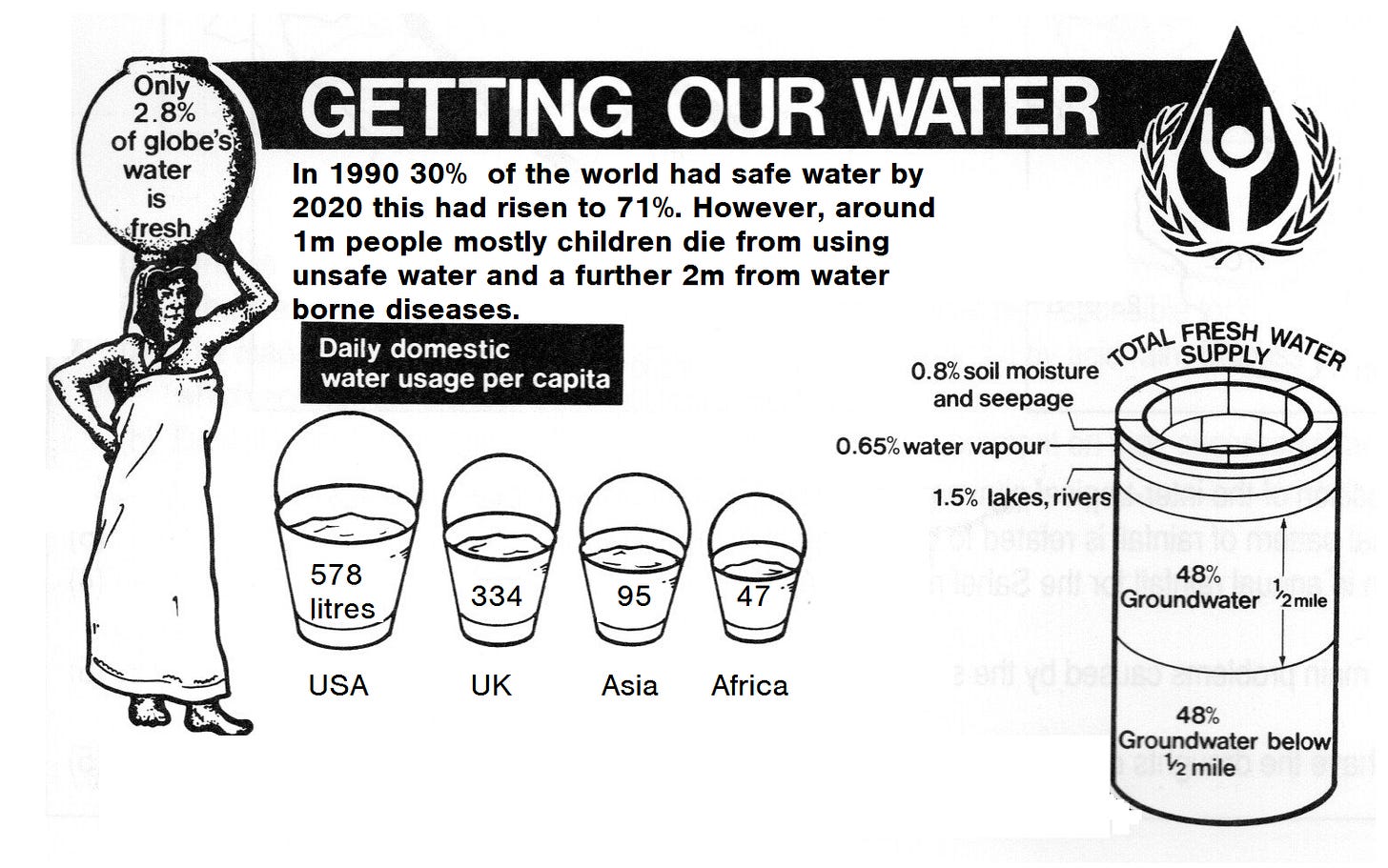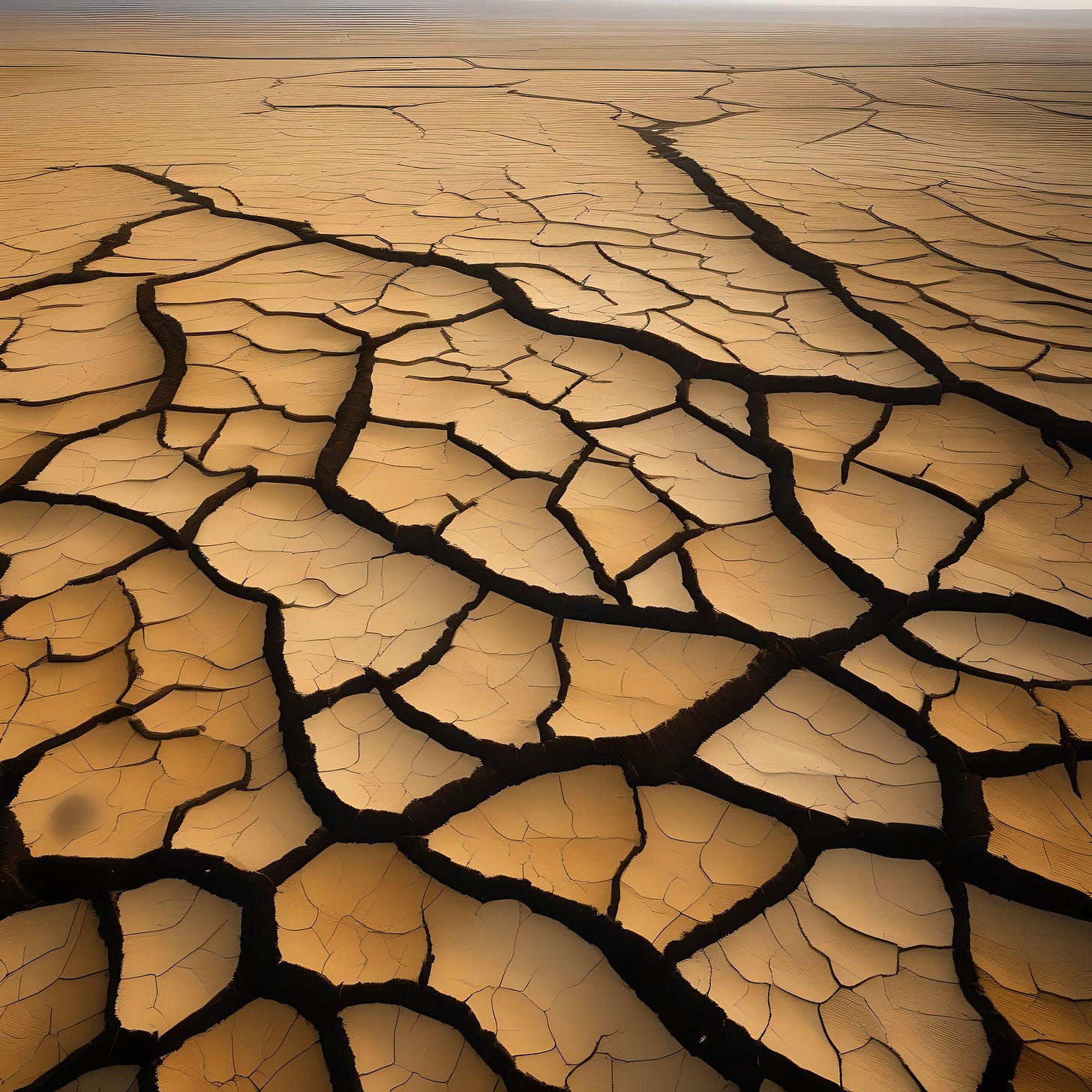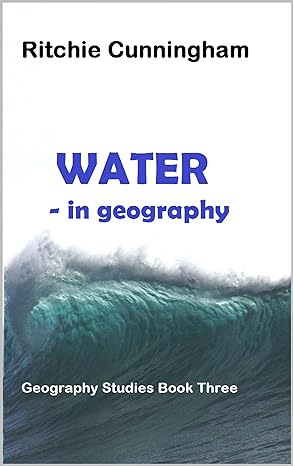By Ritchie Cunningham, Updated July 2025
Freshwater, the lifeblood of our planet, is distributed unevenly across the globe. While some regions enjoy abundant rivers, lakes, and aquifers, others endure chronic water scarcity, facing immense challenges in securing this vital resource. This uneven distribution remains a significant barrier to sustainable development and human well-being, with the crisis intensifying in recent years due to factors like population growth, climate change, and inadequate water management.
Geographical Disparity: A Stark Divide
The disparity in freshwater availability is stark and persistent. According to the World Population Review's 2025 rankings, the most water-stressed countries are concentrated in the Middle East and North Africa, with Kuwait, Cyprus, Oman, and Qatar topping the list. These nations withdraw more than 80% of their available water resources annually, a threshold categorised as "extremely high" water stress. In contrast, regions such as the Amazon Basin, Canada, and Russia possess vast freshwater reserves that often exceed local demand.
Water surplus areas typically experience high precipitation, low evaporation rates, and effective management, while water deficit regions suffer from low rainfall, high evaporation, and growing populations or industrial demand. For example, North-east Brazil in the Amazon rainforest and parts of Canada have a water surplus, whereas countries such as Australia, India, and much of Africa and the Middle East experience significant deficits.
The Broad Consequences of Water Scarcity
The impacts of water scarcity are far-reaching:
Limited access to safe drinking water: Over 1.8 billion people are projected to face absolute water scarcity by 2025, with millions already lacking access to safe water, leading to health crises and the spread of waterborne diseases. Vulnerable groups, especially children and women, are disproportionately affected.
Threats to food security: Agriculture accounts for about 70% of global freshwater withdrawals. Water scarcity reduces agricultural productivity, increases hunger, and threatens food security, particularly in regions dependent on rain-fed farming.
Economic losses: The World Resources Institute estimates that some regions could see their GDP decline by up to 6% by 2050 due to water-related losses, highlighting the economic stakes of water mismanagement.
Environmental degradation: Overuse of limited water resources leads to salinization, soil erosion, and ecosystem collapse, creating a vicious cycle of environmental and social challenges.
Spotlight on Vulnerable Regions
Several regions face particularly acute water scarcity:
Sub-Saharan Africa: Many countries here are among the most water-stressed globally. Rapid population growth and climate change are intensifying the crisis, with millions lacking basic water services.
Central Asia: The Aral Sea disaster remains a stark example of the consequences of unsustainable water management, resulting in severe environmental and human impacts.
Middle East and North Africa: Countries like Kuwait, Saudi Arabia, and Egypt are among the world's most water-stressed, with competition for scarce resources fueling regional tensions and hindering development.
India and China: Both face severe regional disparities. Northern China, for example, has seen extensive groundwater over-extraction, causing land subsidence and prompting massive water transfer projects.
Mexico City: A Megacity on the Brink
Mexico City, home to over 22 million people, is now a global symbol of urban water crisis. The city depends heavily on both underground aquifers (about 60% of supply) and the Cutzamala System, a network of reservoirs and canals. Years of overextraction and declining rainfall have pushed these sources to their limits. As of early 2024, some reservoirs are at only 30% capacity, and large parts of the city have experienced water rationing, sometimes to just an hour of supply every few days.
Key factors worsening the crisis include:
Overextraction of groundwater is causing land subsidence, with the city sinking up to 20 inches per year since 1950.
Leaky infrastructure and rapid urban sprawl leading to massive losses and inefficiencies.
Climate change, increasing both the frequency and severity of droughts.
Without urgent intervention, experts warn of a looming "day zero" when piped water could cease for much of the city.
Seeking Solutions: A Multifaceted Approach
Addressing the challenges of uneven water distribution requires coordinated action:
Sustainable water management: Techniques like rainwater harvesting, improved irrigation, and wastewater treatment can help conserve existing resources.
Infrastructure investment: Building and maintaining efficient distribution systems, desalination plants, and leak detection networks are critical, especially in urban areas.
Climate change mitigation: Reducing greenhouse gas emissions and preparing for more frequent droughts is essential.
International cooperation: Transboundary water management and knowledge sharing are vital for equitable access and conflict prevention.
Geography Examination Questions
Multiple Choice:
Which region is most likely to experience water surplus:
a) Middle East
b) Amazon Basin
c) North Africa
d) Central Asia
Short Answer:
Explain the difference between water stress and water scarcity.
Describe two consequences of water scarcity for human populations.
Case Study:
Using Mexico City as an example, outline the main causes and consequences of urban water scarcity.
Data Interpretation:
Given a map of water stress rankings by country, identify patterns and suggest reasons for high or low rankings.
Extended Response:
Discuss the role of climate change in exacerbating global water scarcity. Use examples from at least two regions.
Evaluation:
Assess the effectiveness of large-scale water transfer projects, such as China’s South-North Water Transfer Project, in addressing regional water deficits.
References:
This expanded and updated overview highlights the urgent need for sustainable and equitable water management in a world increasingly divided by access to this most basic resource.
Additional References:
BBC News. (2023, January 25). Aral Sea: The lake that vanished. https://www.bbc.com/news/world/asia
Food and Agriculture Organization (FAO). (2020, June 1). Water scarcity. https://www.fao.org/land-water/water/water-scarcity/en/
UNICEF. (2023, February 15). Water, Sanitation and Hygiene (WASH). https://www.unicef.org/wash
United Nations Environment Programme (UNEP). (2021, March 22). Freshwater. https://www.unep.org/topics/fresh-water
World Bank. (2020, October 6). Water Scarcity in the Middle East and North Africa. https://www.worldbank.org/en/news/press-release/2023/04/27/water-scarcity-in-mena-requires-bold-actions-says-world-bank-report
World Resources Institute. (2023, March 14). Aqueduct Water Risk Atlas. https://www.wri.org/data/water-stress-country
Excelsior. (2024, February 1). Crisis del agua en la CDMX: Sistema Cutzamala al 30% y pozos secos [Water crisis in Mexico City: Cutzamala System at 30% and dry wells]. https://www.reuters.com/world/americas/mexico-city-residents-protest-unprecedented-water-shortages-2024-01-31/










You could add to your list: control population growth in areas where water is scarce. Nature did that for humans in a lesser state of development.